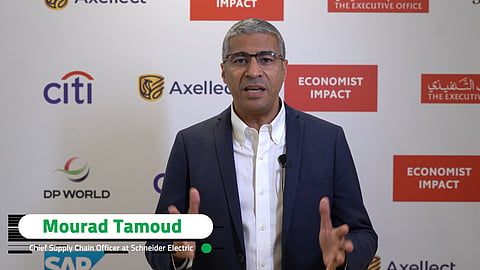‘The Most Sustainable Energy is the Energy You are Not Consuming’
How do we as an industry win over the naysayers and those who only pay lip service to sustainable change? What can we do to get more people on board?
When speaking about sustainability it’s critical to lead by example. At Schneider Electric we are making sure we have the right level of activities all throughout the organisation with all the people playing their part. We have a comprehensive plan to make sure that all our associates are part of the journey. We also engage with our ecosystem of customers and suppliers. This engagement with the entire ecosystem helps us convince the naysayers who still doubt the importance of sustainability.
What are the biggest global challenges regarding sustainability? Do they relate to the regional challenges?
The global challenges can be classified into three key elements. Number one, how we transition from a fossil-fuel based economy to a more renewable-energy-based economy. The second key element, water particularly in the Middle East and Africa, is management of water resources. And the third is waste management and recycling, and how we can give a second life to our products working closing with design and R&D teams to ensure our operations are as sustainable and circular as possible.
What 3 things can businesses do to be more green?
In order to analyse your sustainability strategy, it is extremely important to start measuring things like your carbon footprint and your CO2 emissions within the perimeter of your company. The one thing we always say is that the most sustainable energy is the energy you are not consuming. So how you reduce energy consumption is very important. Process automation is also very important in reducing energy consumption. Last but not the least is electrification which enables you to move towards renewable energy.
Secondly, sustainability has to be incorporated into your product design using more renewable, circular and green materials. For example, packaging and how you remove single use plastics out of your supply chain.
The third element of a sustainability strategy would be your suppliers. We are proud at Schneider Electric to talk about our Zero Carbon Project where we have embarked with 1000 suppliers to drive 50% reduction of CO2 emissions by 2025.
Do you view intra-industry collaboration as a key of a green future? If so, how can we facilitate such collaboration?
The challenge we are all facing with sustainability is broader than just our company’s operations it involves the whole ecosystem and connecting various parts of the supply chain. It makes no sense for us to try to fix the transportation challenge on our own. We need to collaborate with our partners in logistics for that. Similarly for raw materials we need to collaborate with suppliers to make sure we are integrating sustainable materials into our products. Therefore, collaboration is an absolute necessity to meet the sustainability challenge.
What do you see happening in the M.E. region in particular that gives you hope for the future?
Coming here to Dubai for the Economist Impact Forum on the supply chain I can see a real engagement with sustainability. The region is moving from a fossil-fuel-driven economy to a more renewable one. There are several examples in the region from governments to other stakeholders in the region towards leveraging more solar energy and the best technologies available to reduce consumption, improve efficiency to meet the sustainability challenge.
Read More: Schneider Electric Debuts EVlink Smart Charger in Saudi Arabia


